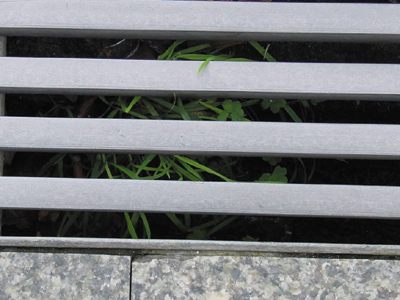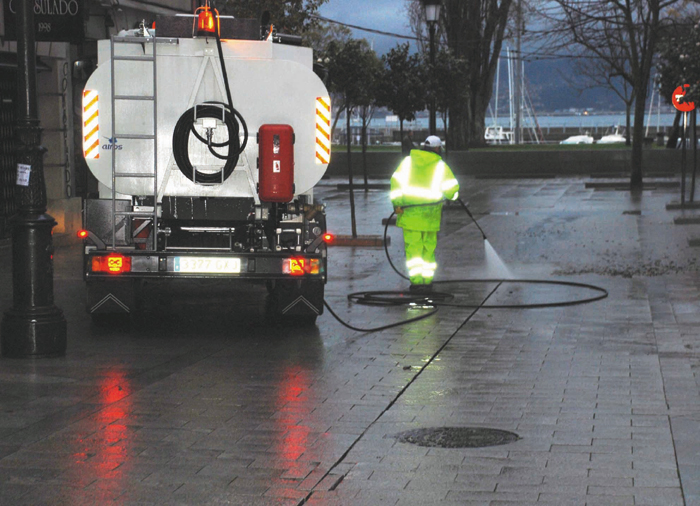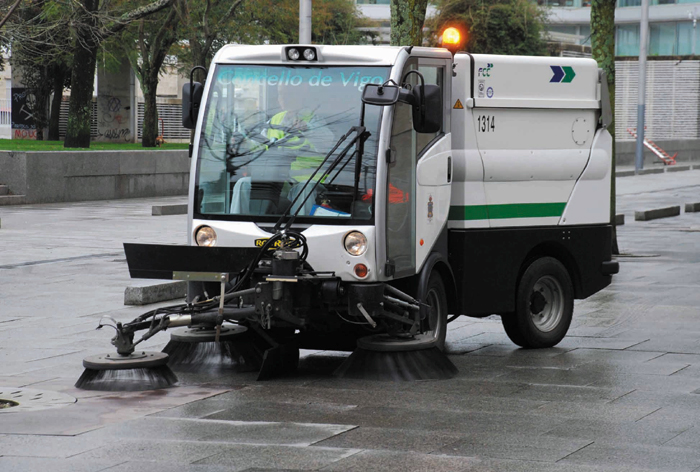Eva Portas Fernández
Technical consultancy area, Granite Technology Center www.fctgranito.es
All exterior paving project some consideration must include a specific plan for use and maintenance of natural stone pavement. This must at least include the maintenance plan, the planning of scheduled cleaning operations, monitoring and documentation of all interventions throughout the pavement service life.
To define proper maintenance and conservation of the stone pavement will consider a set of guidelines listed below.
1.Regular visual inspection: It is necessary to observe the non-appearance of new damages in the repaired stone pieces, as well as healthy parts. In general, it is advisable to check the pavements for the following pathological processes every two years:
• mechanical-chemical erosion,
• moisture and capillary damage,
• ravelling,
•cracks and fissures.
It is recommended to conduct a photographic report of the inspections to serve as a means of comparison in subsequent proceedings.
2. Scheduled cleaning: The best cleaning method has to be employed with adequate frequency to prevent the occurrence of damages related to the accumulation of dirt. In addition, inspect the level of cleanliness of pipes and drainage items to prevent a blockage which may cause the appearance of moisture in the stone pavement.
3. It is recommended to replace stone items with a certain frequency: Depending on the degree of exposure and perimeter conditions of the stone items, replacement should be done. They are works that are very easy to do which give good results.
4. Finally, if there are variations from the intended use: For example the movement of heavy traffic, buses, trucks, cleaning machinery, etc.., it is recommended to intensify the inspection and repair work on time to avoid progressive degradation of the pavement. It should be noted that this fact implies a lack of foresight of the pavement usage, a fact which happens frequently and assuming a pavement de-signed for pedestrians without taking into account that in many stages of its life it will be subject to the passage of heavy cleaning equipment, traffic diversions due to works, moving trucks, etc.


Examples of pavements to be cleaned
A proper maintenance plan makes it possible to adopt preventive measures such as protection and reinforcement without the total replacement of the pavement.
As for the cleaning of stone floors, the requirements that must be considered for selecting the cleaning method are:
• The cleaning speed should be slow to control the effects that occur.
• The selected method should not produce products that alter the stone items.
• The method chosen should not damage the surface of the piece.
• Cleaning methods can be classified as wet methods and mechanical methods.
Wet methods are based on the action of water with which it accumulates dirt to later remove it by brushing, scraping or scrub¬bing. If brushes are used for this purpose, it is recommended that they have wire bristles containing stainless steel or wood.
The main methods of wet cleaning are:
• Cleaning by high pressure water jet: This method should not be used in stones with high decoherence amongst its particles. Extra care has to be taken with the temperature at the time of cleaning to avoid frost and the use of the minimum amount of water in porous rocks. Cleaning with high pressure water jet is effective only if it is for the removal of crusts with soluble salts, especially if they are deposited on limestones

Pressure water jet cleaning
• Cleaning by water raining: This method is used in order to soften the dirt on the surface of the stone. Cleaning by water raining requires the use of large amounts of water and this can cause problems both in the appearance of infiltration as soluble salts after evaporation of the same.
• Cleaning by water spray: This method uses water droplets of small diameter enabling low water consumption. Cleaning by water mist is used especially in the removal of black crusts.
• Cleaning by water vapour: Special care must be taken in applying this method due to the use of high temperatures which could produce efflorescence.
• Cleaning by atomized water: This method is used to reach remote areas, its aim is the dissolution of dirt found on the surface of the stone.
Mechanical methods are based on the use of mechanical actions.

Mechanical cleaning with special equipment (water and brushing)
One of the advantages of mechanical cleaning is that it does not induce moisture into the stone. Mechanical cleaning is com¬prised of the following methods:
• Simple mechanical cleaning: This method is based on manually removing all surface dirt using tools such as scalpels, scrapers or sandpaper.
• Sand blast cleaning: This method is characterized by its abrasiveness. Sand blasting can be wet or dry depending on whether water is used in combination with the sand used. A variant of this method is the use of sand microjet that uses a smaller abrasive dust with little hardness.
Sections
